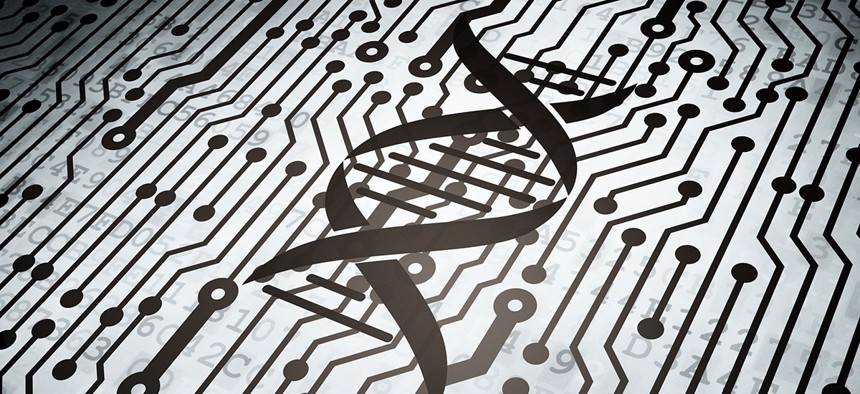A DNA Computer Has a Trillion Siblings and Replicates Itself to Make a Decision

Maksim Kabakou/Shutterstock.com
To date these machines have only been theoretical.
Think of a computer.
You’re probably imagining a smartphone or laptop, or even one of Google or Amazon’s huge server buildings if you’re in the know about the physical internet.
Those modern computers serve us well, but in the future, the word “computer” may conjure images of something much more... squishy. Researchers from the University of Manchester announced last week they’ve taken another step toward building computers from DNA, a far cry from the silicon processors that underpin our digital infrastructure today.
Previous research has shown these computers are possible, but Manchester researchers have built early versions of a theoretical computer called a non-deterministic universal Turing machine—or one that could branch off to explore a series of decisions when given a problem, published in Journal of the Royal Society Interface.
To date, these machines have only been theoretical, because an infinite and exponential expansion of code would overload even the world’s highest-capacity computers. But DNA is infinitesimal and can self-replicate: a strand of DNA can copy itself an unlimited number of times with slight variations every time it is confronted with a decision—and still fit in a few drops of liquid, according to co-author Ross King.
The underlying research out of Manchester is complicated, but here are the basics: A strand of DNA is built by arranging the four chemical bases that make up genetic code into specific sequences. The DNA is then cycled through 14 parallel chambers containing gene-editing molecules, which prompt the DNA to shuffle itself into trillions and trillions of random combinations.
King offers an analogy: imagine a computer trying to solve a problem is actually trying to navigate a maze. Instead of tracing one path of the maze at a time, DNA could replicate itself at every junction—and at each point in the maze incorporate new information gleaned from solving the previous step. This would let the DNA explore exponentially faster than modern computer processors. Each strand of DNA is a processor, because it’s executing the command of replicating itself with a slight variation, building another processor which can take up its mantle. Unlike our modern computers that use processors more or less permanent and can run unlimited kinds of code, these are single-use and disposable, the exact opposite.
The researchers demonstrated the feasibility of this machine in lab conditions, but did not build a complete working NUTM. One problem is the ability to find the code that “solves” the problem (or the right instructions to complete the maze in our analogy). King says the team is working on labels, or easily-detectable markers generated when a solution is found. This makes it easier for the computer to locate the strands of DNA that are actually useful, which would be floating amidst trillions of similar versions of itself.
Even though DNA sequencing has taken huge leaps since the late 1970s, a machine still wouldn’t fit inside your MacBook and probably would take too long to get much work done. Plus, the kinds of pure math problems that NUTMs would solve aren’t of much use when browsing Facebook or making spreadsheets. But any research on this front helps us understand how we could use this technology in the far future, whether that means an Amazon server that looks like a gallon of water, liquid data pipelines, or a computer injected into your head.





